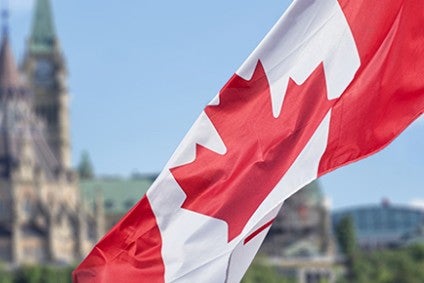
The latest round-up of updates to key free trade agreements and trade preference programmes involving the United States, the European Union, the United Kingdom, Canada and Japan covers developments in November 2020.
UNITED STATES
US-UK Free Trade Agreement
The United States and the United Kingdom (UK) finished the fifth round of negotiations on a bilateral free trade agreement in late October. While no new talks are scheduled between now and 20 January 2021, when President Biden takes office, industry sources say both sides are very “motivated” to reach an agreement in the next few months – hopefully before the current Trade Promotion Authority expires. This would involve concluding the negotiations by April 2021. Talks on the textile chapter have been relatively smooth; however, agriculture is a thorny issue that may either make or break the deal.
US Section 301 Investigation on Vietnam
See Also:
Pushed by industry stakeholders, the Office of the US Trade Representative (USTR) on 25 November 2020 agreed to hold virtual hearings in December 2020 to inform its Section 301 investigations on Vietnam’s currency and timber practices. Requests to speak at the hearings can be submitted to USTR by 10 December 2020. However, USTR says the hearing will “NOT involve testimony regarding specific products or services that might be affected by an action in the investigation.”
How well do you really know your competitors?
Access the most comprehensive Company Profiles on the market, powered by GlobalData. Save hours of research. Gain competitive edge.

Thank you!
Your download email will arrive shortly
Not ready to buy yet? Download a free sample
We are confident about the unique quality of our Company Profiles. However, we want you to make the most beneficial decision for your business, so we offer a free sample that you can download by submitting the below form
By GlobalDataIn October 2020, USTR said it would launch two new Section 301 investigations on Vietnam regarding the country’s import and use of timber that is reported “illegally harvested or traded” and Vietnam’s “undervaluation of its currency.” It is of grave concern to many US fashion companies that the investigation may result in new US punitive tariffs on imports from Vietnam, which could happen as early as January 2021 and cover apparel items.
Many US fashion companies are seeking to increase their apparel sourcing from Vietnam to reduce their exposure to China. The value of US apparel imports from Vietnam increased by 131% between 2010 and 2019, much higher than the 17% world average. Vietnam’s share of the US apparel import market has also surged from only 4.0% in 2005 to 16.8% in 2019 – and 20% in the nine month period from January to September 2020.
EUROPEAN UNION
EU-New Zealand Free Trade Agreement
The ninth round of negotiations for an EU-New Zealand trade agreement was held virtually from 23-30 November 2020. According to the media announcement, this round resulted in a provisional agreement on chapters ‘Small and Medium Enterprises (SMEs)’ and ‘Capital Movements.’ Two other chapters – ‘Transparency’ and ‘Customs and Trade Facilitation’ – were provisionally reached in earlier rounds.
New Zealand is a minor apparel supplier to the EU market. In 2019, the EU imported US$3.7m apparel from New Zealand, accounting for less than 1% of the total. Meanwhile, New Zealand’s exports to the EU are largely dominated by agricultural products.
UNITED KINGDOM
UK Generalised System of Preferences (GSP) programme
In November 2020, the United Kingdom (UK) released its Generalised System of Preferences (GSP) plan to be implemented on 1 January 2021. UK’s GSP programme will include three “frameworks”:
- Least developed countries framework (47 eligible countries): Apparel exports from these countries will enjoy duty-free and quota-free market access to the UK.
- General framework (32 eligible countries): Apparel exports from these countries will enjoy reduced tariff rates in the UK. [Note: India is a beneficiary of the “General framework.” However, apparel exports from India are excluded from the UK GSP programme (“goods graduation“).
- Enhanced framework (8 eligible countries): Apparel exports from these countries also will enjoy duty-free market access to the UK. However, as a condition, these countries need to implement conventions relating to human rights, environment, and good governance.
Least developed countries framework
*Note: Only those countries whose apparel exports are eligible.
CANADA
Canada-UK Trade Continuity Agreement
On 21 November 2020, Canada and the United Kingdom reached the Canada-United Kingdom Trade Continuity Agreement (in principle), which will enter into force on 1 January 2021.
As the Canada-EU Free Trade Agreement (CETA) will no longer apply to the UK after 31 December 2020, this new continuity agreement intends to provide continued access to the benefits of CETA on a bilateral basis, including the elimination of tariffs on 98% of Canadian products exported to the UK. Meanwhile, Canada and the UK plan to negotiate a comprehensive free trade agreement soon.
JAPAN
Regional Comprehensive Economic Partnership (RCEP)
On 15 November 2020, ten members of the Association of Southeast Asian Nations (ASEAN) plus Australia, China, Japan, New Zealand and South Korea reached the Regional Comprehensive Economic Partnership (RCEP), after nearly eight years of negotiation.
RCEP matters significantly for the textile and apparel sector. According to United Nations statistics, in 2019 the 15 RCEP members together exported US$374bn worth of textiles and apparel (or 50% of the world share) and imported US$139bn (or 20% of the world share).
In particular, RCEP members serve as critical apparel-sourcing bases for many US and EU fashion brands. For example, in 2019, close to 60% of US apparel imports came from RCEP members, up from 45% in 2005. Likewise, in 2019, 32% of EU apparel imports also came from RCEP members, up from 28.1% in 2005.
According to the released text:
- Japan has committed to reducing the import tariff rate for most apparel imports from ASEAN members, Australia and New Zealand on day one. However, only four types of apparel items (at the 8-digit HS code level) from China and South Korea will be able to enjoy the duty-free treatment on day one when exported to Japan. Further, Japan will continue to impose import tariff rates on apparel from China and South Korea until year 16, after the implementation of the agreement.
- In general, RCEP adopts very liberal rules of origin for apparel products. RCEP members are allowed to source yarns and fabrics from anywhere in the world, and the finished garments will still qualify for duty-free benefits. In other words, most garment factories in RCEP member countries can immediately enjoy the benefits without having to adjust their current supply chains.
Hopefully, RCEP will enter into force as by late 2021 or early 2022. Officially, RCEP will enter into force 60 days after at least six members have approved the agreement through their respective domestic legislature. However, these six members must include three ASEAN members and three non-ASEAN members.







